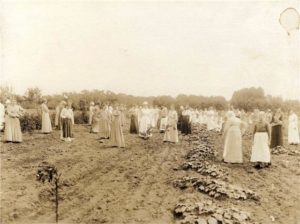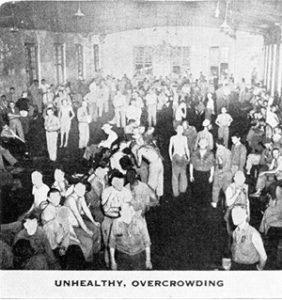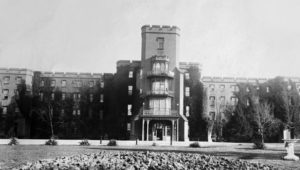
Female Patients Farming in the early 1900s
Care in private insane asylums could be quite nice (see last post), but quality care in public institutions usually went downhill once they became popular enough for the public’s demand to lead to overcrowding. Many superintendents held costs at bay by growing their own crops, making patients’ clothing, rearing livestock, and so on, with free patient labor. This labor was at first genuinely believed to be therapeutic, but as work shifted from “light” and enjoyable to strenuous and ongoing, these activities lost much of their therapeutic value. Some patients did note, however, that they appreciated work because it helped pass the time and made them tired enough to sleep.

Overcrowding at Philadelphia State Hospital, courtesy 1946 Department of Welfare Report
Staff interaction is typically where overcrowding made the biggest impact, particularly with attendants. Staff became overwhelmed with their workloads and simply couldn’t provide the level of care that many patients needed. A paragraph in the March 28, 1900 issue of The Washington Post gives just a glimpse of this issue:

St. Elizabeths’ Center Building, circa 1900, courtesy National Archives
“The conditions existing in the disturbed ward of the women’s department are especially deplorable . . . it is necessary to keep the most troublesome under constraint, but, owing to the fact that the accommodations in the sleeping rooms are now entirely inadequate and it is impossible to confine those who are most troublesome, it is necessary to use the straight [sic] jacket or the sleeved vest, binding the arms of the patient while he or she is mixed up with the others in the corridors of the wards. Their cries and piteous struggles make the other disturbed patients more and more uneasy, until all rest is impossible and the chances for cure there made more remote.”